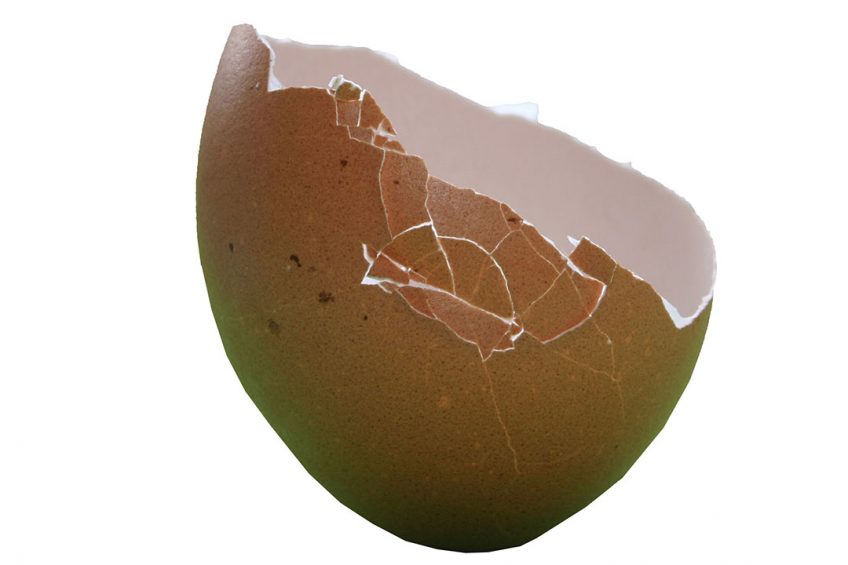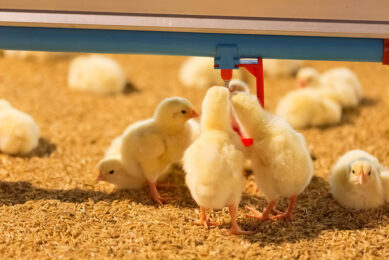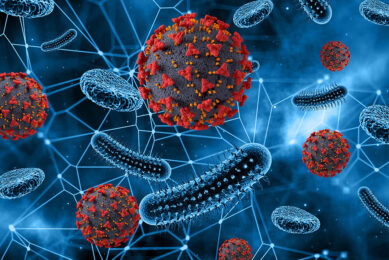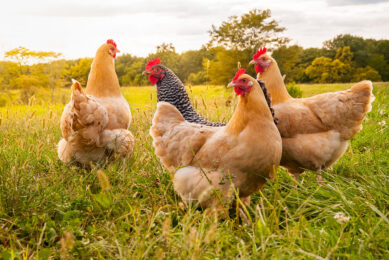Pushing the limits of shell quality through gut health

The laying industry faces unique challenges due to Covid-19. Prices are volatile, yet consumer demand is high. Producers must work hard to produce the best possible eggs, while also finding alternative ways to improve margins in these challenging times.
The avian egg is seen as the most complex amniotic egg in oviparous vertebrates. With complexity comes challenge, and while reducing costs is difficult, one means of doing so is through improved bird productivity. The role of layer gut health in this aim is often overlooked, despite its link to shell quality. Many factors influence the quality of an egg, but shell strength is often regarded as crucial. Cracks significantly contribute to downgrades, and producers must consider this, especially as second-class egg percentages are critical to profitability.
A healthy gut is one from which the bird can sustainably produce to its genetic potential, not just one absent of disease or subclinical infection. A healthy gut can optimise performance, so much so that it is often referred to as the limiting factor. Intrinsic to gut health is microbiota diversity.
But why does enhanced diversity lead to improved layer performance?
The gut is an ecosystem, and maintaining health is a balancing act. There are multiple species of microorganisms in the gut — bacteria, protozoa, fungi and viruses — all with different classifications. Birds have a symbiotic relationship with these organisms; they all work together to create a functioning ecosystem within the gut.
For context, imagine a village where a disaster has hit. If the population contained people who all had the same skill, they would not be able to rebuild the village and sustain themselves effectively. However, if the people in the village had different skill sets, it would be rebuilt efficiently and quickly. This exact theory can be applied when looking at the importance of the microbiota in the gut. Each species has a niche, and beneficial organisms provide a service for the host. One example is through metabolising NSPs into butyric acid, which the bird can then use as an energy source for enterocytes lining the gut.
Health status key
The gut is the biggest organ in the body. As a result, its health status can directly impact a whole host of other areas; one example being egg production. The shell is a complex structure of multiple layers, composed primarily of calcium carbonate (CaCO3). The base layer (mammillary body) is formed first, comprising of the mammillary cones. This provides a platform on which other components can form. The palisade layer forms on top of this, followed by the transitional vertical crystal layer and the cuticle. Each layer is a highly specific structure, providing high resistance to compressive stress. These structures have CaCO3 components, but their structural integrity is withheld in the organic matrix by glycoproteins and glycosaminoglycans. Ensuring an optimised shell structure will improve strength, helping to prevent breakages and hairline cracks.
Structural layer creation is multifactorial (see image below). As such, many things can influence their composition. The shell is created from components fed in the hen’s diet, meaning optimum gut health ensures optimal shell quality. Likewise, a poor-quality diet is likely to lead to a poor-quality shell. Generally, an egg is produced daily. To maintain production, the hen must be able to digest and absorb all of the energy and nutrients she needs from her diet. Egg formation is a complex and energy-rich process. The yolk passes out of the ovary through the reproductive system. Each step — be that albumen formation or shell formation — requires specific minerals and nutrients. Hens must have all of their nutritional needs met, but some minerals are vital. Zinc (Zn) is a good example. Not only does it perform functions in the cells of the immune system, but it works as a co-factor for an enzyme involved in the production of CaCO3. Not enough Zn can lead to weak shells. Manganese (Mn) activates an enzyme involved in the production of glycoproteins and glycosaminoglycans, which constitute 2–4% of the eggshell through their roles in the organic matrix. Copper (Cu) is involved in the formation of collagen, the part of the eggshell membrane surrounding the yolk and albumen and the layer on which the shell is laid. Selenium (Se) is crucial as a natural antioxidant, but also in the egg itself, and has a big impact on maintaining freshness.

Critical minerals
Without a healthy gut, birds cannot absorb critical minerals efficiently. This, alongside mineral form, hugely influences mineral bioavailability; organic chelated minerals are better absorbed than their inorganic counterparts for this reason. When producers focus on their flock’s gut health by using products like Actigen, it allows the bird to produce the best structural integrity within their gut. Healthy villi will have a large surface area, with good crypt depth: villi height ratios. Gut health and the microbiota directly impact villi structure and integrity. So, optimal health ensures that nutrients can be effectively absorbed across the epithelium into the bloodstream or lymph. In subclinical disease challenges or when gut health is not optimal, surface area will be hugely reduced, and villi structure impacted. As well as impacting digestion and absorption, inflammation is also likely if the microbiota profile is not correct. This provides an extra mucus barrier through which nutrients, including minerals, must pass before being absorbed, influencing shell quality and strength.
If gut health can be improved, the negative consequences associated with increased inflammation and insufficient nutrient uptake can be avoided. Shell strength depends hugely on the structure of the internal shell components. Studies show that where structural integrity is compromised, shell strength suffers. Minerals play a vital role in ensuring that mechanical structures can be deposited correctly, either directly through their use in complexes or through their use as co-factors in enzymes involved in the manufacturing process. Compromised gut health affects mineral uptake, which can reduce shell strength. It is important to consider the type of minerals utilised in diets, as this too can impact shell strength through bioavailability differences. Organic chelated minerals have superior uptake when compared to their inorganic counterparts and interact less with vitamins when in the gastrointestinal tract. The type of chelate will also impact stability and interaction and, hence, bioavailability. So, careful selection for diets should be made.
Microbiota profile
Gut health also significantly impacts litter quality. Whatever is not digested and absorbed, will be defecated into the litter. If the microbiota profile in the gut can be improved, the house flora will improve too, decreasing disease pressure. The most noticeable indicator of gut health in a laying bird is the colour and texture of her faeces. Caecal droppings are especially clear indicators of microbiota population health. Monitoring them is an easy way for producers to examine flock health. Dark green droppings with a pasty consistency are ideal, whereas yellow and foamy droppings indicate possible issues. Alltech’s Online Manure Scoring System is a new tool for monitoring and advising on gut health status within flocks.
As birds age, they produce larger eggs with changing mineral requirements. Gut health will remain as the limiting factor to performance and egg quality, so optimisation is key to achieving peak performance and profitability. Due to Covid-19, with people spending more time at home, baking and cooking, egg demand has sky-rocketed. This has been good for the egg market in terms of an upturn in growth. Even when returning to a sense of normality, demand is expected to remain high. With this in mind, first-class eggs become a priority. Shell strength should be a focal point when aiming for better downgrade levels, and this is possible by looking at the mineral form. However, the importance of a good quality diet and gut health should also not be overlooked.
Author:
Emily Marshall, Alltech Europe
 Beheer
Beheer





 WP Admin
WP Admin  Bewerk bericht
Bewerk bericht